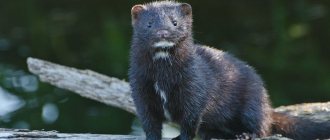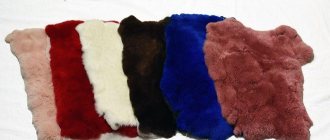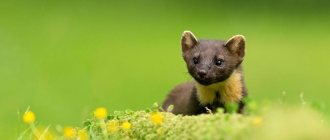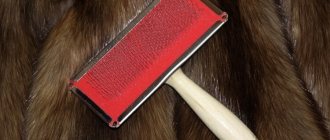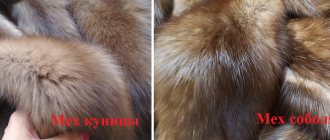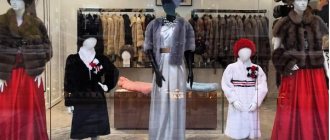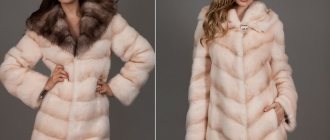Fisher's lovebirds are known for their mischievous nature and love of life. It is impossible to get bored next to these feathered pranksters: they stand out not only in their external features, but also in their habits. Miniature parrots staunchly defend their territory and also know how to be friends with people. Do you want to know why colorful birds are so attractive? Let's first get acquainted with their lifestyle in nature and at home.
Where do Fischer's lovebirds live?
Parrots of this species inhabit southeast Africa, occupying a small territory of Tanzania near Lake Victoria. This area can be considered a good choice for living. On a hot, arid continent, the most valuable thing is fresh water. The presence of a reservoir, as well as a subequatorial climate with rainy seasons, allows birds not to lack food.
Lovebirds do not fly from place to place; they are attached to a specific area. The African savanna suits them: vast plains with small groves. Parrots live in small flocks, united by related origin. As the colony grows, it may break apart. For rest, parrots choose low-growing trees and roost in dense crowns. They feed on ripe fruits, berries, and grass seeds. During periods of drought and lack of food, they are forced to raid farmland.
This is interesting! In nature, lovebirds live in pairs and demonstrate amazing fidelity. In English, their name sounds like “lovebirds” - love birds. They received this nickname due to the manifestation of tender care for each other.
Despite such a small home range, the wild lovebird population contains approximately a million individuals. Once upon a time, during a time of massive demand for exotic birds, their numbers dropped to critical levels. There was a threat of extinction, and the species was going to be listed in the International Red Book. The country's authorities have banned the export of these parrots, thus the situation has leveled out. Birds readily reproduce in captivity, and now it is not advisable to take them from the wild.
general information
Fischer's lovebird occupies one of nine places in the classification. This species of bird was first discovered by the German military doctor Gustav Adolf Fischer while traveling and studying the nature of Africa. Fischer reflected his observations in reports, but soon after his return he died of tropical fever. A few years later, ornithologist Anton Raikhenov published the results of the expedition. Among the birds discovered was a small parrot. The lovebird got its name in honor of the traveler Adolf Fischer.
Masked lovebird (left) and Fischer's lovebird (right)
Fischer's lovebird has a relative similarity to the masked lovebird, so some researchers propose combining the two species into one. But objectively speaking, representatives of the masked subspecies have a striking feature - black plumage on the head, so the division is still justified.
Appearance
Among its fellows, Fischer's lovebird is perhaps the smallest - its size does not exceed 17 cm including its tail. An adult bird weighs on average 50 g.
The appearance of the parrot leaves a pleasant impression:
- The eyes are brown, surrounded by white, unfeathered rings.
- Streamlined body shape, the plumage is dense, smooth and shiny.
- The head is round, proportional, there is no noticeable transition to the neck.
- The wings are small and neat - feather to feather.
- The tail is short, blade-shaped.
- The paws are stable, strong and tenacious.
- The beak is quite large, rounded at the top, curved at the tip.
The natural color of a parrot contains three main shades: green, blue, orange. Most of the body is covered with grass-green feathers. The rump is blue, the head is bright fiery. On the chest, orange feathers smoothly give way to yellow ones, creating a kind of “apron”. The crown of some birds is darker than the facial mask. The beak of the chicks is light gray, turning red as they grow.
On a note! Male and female lovebirds are practically indistinguishable in appearance: they have the same color and size. A presumptive conclusion about gender can be made by observing the behavior of birds.
Comments • 0
Hello. How to care for artificial fur and sheepskin coats.
Sorry your site is not working. but I would also like to know about the leather of fisher, sable and raccoon. is there a difference and what is it? the fur of the fisher and raccoon and the degree of softness-roughness of the fur of the raccoon and fisher
Elena, the site has been fixed. But we can easily answer questions over the phone. , there is Viber and WhatsApp. in short, yes, the leather tissue of all these skins is very different. sable is the most flexible and thin, followed by fisher with the same characteristics. and the rudest is the raccoon. moreover, first a gargle, and then a dog. In addition, the useful area of all these bellows is very different, so it is difficult to confuse them.
Hello, what is the height of the fisher's fur?
depending on where to measure (neck or rump) and what gender.
Viber, WhatsApp, Telegram, LINE on our mobile number: +7 (964) 790-80-80 Ask questions! Do not be shy.
The full name of the baby fisher is a light spot on the neck - darling.
officially phisher. the spot in professional terminology is the throat spot.
Please tell me, I bought a braski fur coat and they sold it to me as a Canadian sable, the fur is very fluffy and dense, very similar to sable, soft, I bought it for 13,000 € and now I’m disappointed that it’s not sable! But here’s the question, the fur coat is slightly longer than the length of the fur coat, given my height of 166 cm, the fur coat is simply gorgeous, but! Is she worth the money?
The fact is, Violetta, that the issue of pricing in popular fur stores is a separate topic on which we do not comment. Although, with such a length and price, you could definitely sew a custom-made sable fur coat. Not the most expensive, of course, but still. If you still have questions about the quality of the fur itself, we will be happy to look at the fur coat and give an opinion absolutely free. If necessary, we will show you the fur of fisher, sable, tinted or natural marten. Come)
You're welcome! If you have any questions, ask! We are always happy to answer questions about fur and fur products!
Character and habits
The miniature size and bright beauty of lovebirds give reason to consider them the cutest creatures. However, the first impression is not always correct. Fisher's lovebirds, like other representatives of the species, can be aggressive and know how to defend themselves. These birds are nimble and dexterous. They constantly move, study their surroundings. They can be called hooligans, pranksters, thieves... Sitting still is definitely not about them. This behavior is funny, but only in moderation.
Sociable parrots need company. A lonely bird does not create much noise, since it simply has no one to shout to. In this case, human attention is vital for the pet. If a small company is kept together - two or three lovebirds - they will be busy with each other.
Feathered neighbors do not always live peacefully: for wayward lovebirds, the aura of love and prosperity is quickly replaced by an atmosphere of struggle and discontent. These parrots are especially intolerant of strangers. You cannot keep them in the same cage with budgies, cockatiels, songbirds and other species of birds, otherwise there will be bloodshed.
What do they produce?
Knowing what kind of fisher fur is and what kind of animal it is, many are interested in the question, what products are made from this material? Considering that the fishing marten is tough, fashion designers use it to make men's clothing. Although in the assortment of large fur boutiques, you can find products for women. Today, phisher is gaining momentum in popularity. Therefore, the latest fashion trends recommend that girls pay attention to fur coats, hats, short fur coats and other options for products made from fishing marten fur.
Fisher hat
Fisher fur is described on Wikipedia as a material that can be dyed well. On the one hand, this allows fashion designers to create products in different color combinations. On the other hand, this feature plays into the hands of unscrupulous manufacturers. They paint the ilka in a color reminiscent of sable and sell it at inflated prices.
Keeping at home
Fisher's lovebirds are very often acquired by lovers of small species of birds. Their maintenance requires minimal effort and expense. But this does not mean that any conditions are suitable for parrots. It is important that the room where the bird will live is freely ventilated and illuminated. Fragile lovebirds love fresh air and warmth, but are afraid of drafts and direct sunlight. With good care and feeding, they can live 10–15 years in captivity.
To maintain the health of birds, you need to monitor the microclimate parameters and follow the following regime:
- room temperature 22 – 24 ºC;
- air humidity 50 – 60%;
- daylight hours 10 - 12 hours;
- regular cleaning of the room and cage;
- absence of sharp frightening sounds.
The cage should be installed in a place where direct rays of the sun will not fall on it, and also away from operating equipment. Sometimes a parrot doesn't want to be seen. Inside the cage, the owners place a house for sleeping, in which the bird can retire from prying eyes and noise. To live a full life, active parrots need walks. Even in a spacious cage without free flight, Fischer's lovebirds will not receive physical activity, will begin to gain weight, and lose interest in their surroundings.
How to care
The issue of caring for these products is fundamental, because without quality care they lose their appearance and performance properties. To maintain the attractive appearance and properties of your fur coat, you should follow a few simple rules. Among them:
- Provide sufficient storage space. This is very important, because the fur is thick and should not be allowed to roll up during storage. This approach to storage will ensure a beautiful appearance while using this product for many years without the need to carry out serious restoration procedures.
- Do not use home remedies to clean your Fisher lint fur coat . There are special products for cleaning this particular fur. They guarantee high-quality cleaning and the fact that in the end the fur will not be damaged due to the desire to save time and money on finding the right product.
- Keep the fur coat only in dark, well-ventilated areas , which will further preserve its properties. It is also recommended to add repellents to moths and other similar insects indoors, but do not put them in the product itself so that it does not become saturated with the smell of the product.
Feeding
A varied diet is essential for a parrot's health. The body does not fully absorb vitamins and minerals from food, so various types of supplements are suitable as a supplement. Birds need vitamin and mineral complexes in the spring, during molting, and also during the breeding season.
The diet is based on seeds and grains:
- millet – red, yellow, white (unpeeled);
- oats (crushed or flakes);
- wheat (sprouted, softened);
- hemp seed;
- canary seed.
A small parrot, Fischer's lovebird, does not require much food to maintain activity: 2 - 3 teaspoons of dry grain mixture. In addition, the daily menu should include fruits, boiled vegetables, and green mass. For variety, animal products are sometimes included in the diet. Boiled chicken eggs, cottage cheese, insects and larvae - they are easily digestible. Mineral components: chalk, sepia help maintain the beauty of the plumage and the strength of the beak.
Attention! For parrots of any species, food from the common table is contraindicated. Salty, sweet, fried and canned foods disrupt birds' digestion and cause serious illness.
Voice abilities
Parrots are smart, sociable, inquisitive birds. Many of them learn to repeat spoken words and short phrases after a person. Unfortunately, lovebirds are one of those species of parrots that are not able to imitate human speech. Their vocal apparatus is designed in such a way that it is very difficult to reproduce a certain set of sounds. True, there are exceptions: some parrots pronounce memorized words quite tolerably.
Fisher's lovebirds are not as noisy as, for example, cockatiels. Of course, they love to chirp, whistle, and sing, but these sounds are not repulsive. The voices of birds become too loud only during a quarrel or struggle for territory. Well, or the parrots are very hungry, and the owner is in no hurry to feed them. The peak of noise usually occurs at certain times of the day. Otherwise, the birds do not cause inconvenience to their owners.
Active, nimble, cheerful parrots are the most positive feathered pets. At one glance at the mischievous fidget, a person’s mood improves and a smile appears. Keeping Fischer's lovebird at home is easy and interesting: he is small, eats little, sleeps well, hardly litters, and does not make noise. And most importantly, communication with him brings only pleasant emotions.
History of origin
Wikipedia claims that the phisher shown in the photo began to be used relatively recently. Only in 2012 did fashion designers try to sew the first piece of outerwear from fishing marten fur. The experts liked the quality of the material. It is warm, beautiful and practical. Compared to sable dressing, fisher is a little harsh. However, this property does not prevent us from creating practical things from it.
Fisher fur coat
